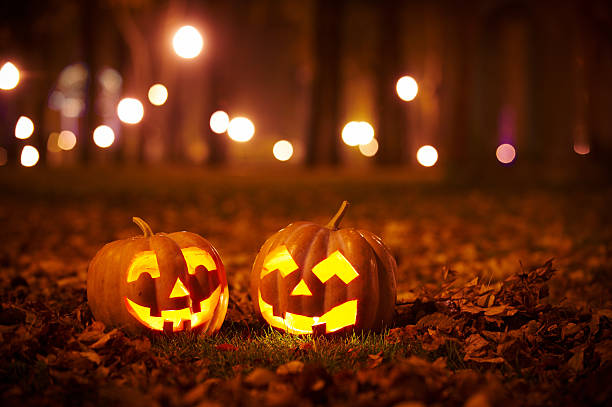Why Halloween Was Created: Unveiling the Origins of a Spooky Tradition
Halloween, a holiday celebrated annually on October 31st, is a fascinating blend of ancient traditions and modern festivities. Its origins can be traced back thousands of years, evolving through various cultures and influences. In this article, we will delve into the intriguing history of Halloween, exploring its roots, cultural significance, and contemporary celebrations.
Introduction to Halloween
The history of Halloween is a tapestry woven from ancient beliefs, religious observances, and cultural exchange. It is a day when the boundary between the living and the dead is said to blur, allowing for otherworldly interactions. This eerie allure has captivated people for centuries.
Ancient Traditions and Samhain
One of the earliest influences on Halloween is the Celtic festival of Samhain. Celebrated around November 1st, it marked the end of the harvest season and the beginning of winter. The Celts believed that on the night before Samhain, the veil between the living and the dead was at its thinnest, allowing spirits to roam the earth.
Christian Influence and All Saints’ Day
As Christianity spread, it sought to incorporate existing traditions into its own calendar. All Saints’ Day, established in the 8th century, was intended to honor all known and unknown saints. It was strategically placed on November 1st, absorbing elements of Samhain and lending a Christian veneer to the ancient celebration.
Evolution into Halloween
With the influx of immigrants to America in the 19th and early 20th centuries, Halloween underwent a transformation. The melding of diverse customs, from Irish and Scottish traditions to African and Mexican influences, gave birth to the Halloween we know today.
Modern Halloween Celebrations
The modern celebration of Halloween encompasses a wide array of activities. Trick-or-treating, where children dress in costumes and go door-to-door for candy, is a beloved tradition. Additionally, adults partake in elaborate costume parties, adding a touch of whimsy and theatrics to the holiday.
Symbols and Iconic Elements
No Halloween is complete without jack-o’-lanterns, carved pumpkins illuminated from within. This tradition, stemming from an Irish folklore about “Stingy Jack,” has become an enduring symbol of the holiday. Haunted houses, ghosts, witches, and vampires also populate the Halloween landscape, evoking a sense of mystery and spookiness.
Global Spread and Adaptations
While Halloween originated in Celtic lands, it has spread globally, adapting to various cultures. In Mexico, it intertwines with the Day of the Dead, creating a unique fusion of customs. Similarly, other regions have infused their own beliefs and practices into the celebration, resulting in diverse and captivating variations.
Commercialization of Halloween
In recent decades, Halloween has undergone commercialization on a grand scale. The holiday has become a booming industry, encompassing costumes, decorations, and an array of themed merchandise. This economic impact underscores the widespread popularity and cultural significance of Halloween.
Controversies and Criticisms
As Halloween’s popularity has surged, so too have concerns about cultural appropriation and safety. Appropriation of sacred symbols and costumes can be offensive and disrespectful. Safety precautions, especially for children, are paramount in ensuring a fun and secure celebration.
The Cultural Significance of Halloween
Halloween serves as a mirror to our collective fears and taboos. It allows us to confront the unknown, to laugh in the face of darkness, and to revel in the thrill of being scared. It reflects the evolving values of society and provides an outlet for creative expression.
Halloween in Pop Culture
The influence of Halloween permeates popular culture. It has inspired countless movies, books, and works of art. Iconic characters like Dracula, Frankenstein, and the Headless Horseman continue to captivate audiences, leaving an indelible mark on our imaginations.
Traditions That Live On
Amidst the evolution and commercialization, ancient traditions continue to thrive. The reverence for the supernatural, the joy of dressing up, and the sense of community remain at the heart of Halloween. These enduring customs connect us to our past and bind us in shared celebration.
Halloween in the Digital Age
In the age of technology, Halloween has found a new home in the digital realm. Social media platforms are awash with creative costume ideas and virtual celebrations. Online communities come alive with discussions of the eerie and macabre, fostering a global camaraderie in the spirit of Halloween.
Conclusion
In tracing the history of Halloween, we uncover a rich tapestry of cultural exchange, ancient beliefs, and modern festivities. From its Celtic roots to its present-day global celebrations, Halloween continues to captivate and inspire. It stands as a testament to our enduring fascination with the supernatural and our shared human need for connection and celebration.
